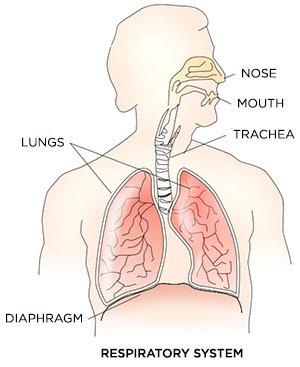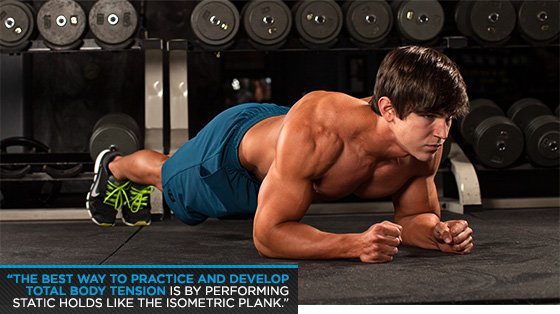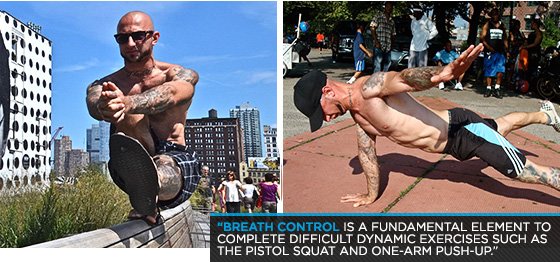How I’m Beating the Stress That Would Love Beat Me
Life can be a pleasent bake-sale or a brutal
ass-beating.
And as it rolls, mine is feeling more along lines
of the ass-beating right now.
To put it bluntly I’m f%$*#ng stressed!
Several things are not bending in my favor at the
moment. The thing I have had to accept is that it’s
not going to change in an instant—that this stress
is going to be here while it compels or motivates
me to take several drastic actions.
I figure that chances are better than good that I am
not alone in this state of elevated stress.
It happens as life does.
But let’s face it… Stress kills!
…but not before it makes you fat and tired.
The negative impact of stress on our bodies and lives
is getting clearer and more disturbing every day.
Implicated in life threatening diseases, stress amplifies
the aging process as its impact on elevated cortisol levels
can have you piling on fat while on a diet.
Cortisol, “the stress hormone,” is handy when you need to
respond to a fight or flight situation, but the chronic nature of
stress for many these days can devastate your health and
undermine your fitness.

Stress both Sucks and Kills…
Life can be a bake sale or an ass-beating. And as it rolls mine is feeling more along lines of the ass-beating right now.
To put it bluntly I’m f%$*#ng stressed!
More than one (two or three) things are not bending in my favor at the moment. Of course, as with any “dis-ease” you can usually point to a contributing, if not causative, element.
The thing I have had to realize and accept is that it’s not going to change in an instant—that this stress is going to be here while it compels or motivates me to take several drastic actions.
And you know, I figure that chances are better than good that I am not alone in this state of elevated stress. It happens as life does.
And in between now and the lemonade stand days to come, I’m going to be dealing with, coping with stress. So, rather than be a victim of what is, I decided to come up with a plan to cope with this increased stress.
Because let’s face it…
Stress kills!
…but not before it makes you fat and tired.
The negative impact of stress on our bodies and lives is getting clearer and more disturbing every day.
Implicated in life threatening diseases, stress amplifies the aging process as its impact on elevated cortisol levels can have you piling on fat while on a diet.
Cortisol, “the stress hormone,” is handy when you need to respond to a fight or flight situation, but the chronic nature of stress for many these days can devastate your health and undermine your fitness.
Some of the negative impacts of excess cortisol…
- Increases your appetite
- Increases fat storage
- Leads to loss of protein and muscle
- Makes insulin less effective
- Impairs cognitive performance (dull)
- Suppresses thyroid function
- Decreases bone density
- Raises blood pressure
- Lowers immunity
- Lowers inflammatory responses
- Increased abdominal fat (worst place for fat)
An added “bonus” (in the worst way) is that elevated cortisol also lead to leptin resistance which results in higher cortisol levels. The result: A vicious cycle of fat gain!
Bottom line is cortisol is “catabolic” – meaning “degenerative” it’s breaking your body down. Where as “anabolic” is the desirable and opposite: It’s about building, rebuilding, repairing and rejuvenating every cell of your body and your life.
How to Lower Cortisol and Get Your Body Fit
Clearly cortisol plays an important role in your body but equally as clear, I’m sure you can see that cortisol is the opposite of everything you need to gain muscle and get lean.
Hell, if we simply look at the impact cortisol has on insulin (causing it to increase) we can see why it’s the enemy of lean and fit. Everything we know about living lighter, leaner and longer is revolving around insulin—and maintaining low, stable insulin levels.
So, just how do you go about getting and or keeping your cortisol at optimal, lower levels?
7 Strong Moves for Lowering Stress Induced Cortisol:
Here are 7 clear, strong moves you can make today to start crush the stress hormone cortisol which is trying to crush you. Do these and watch your catabolic metabolism drop while your anabolic metabolism helps your rise up and conquer!
1. Get More and Better Sleep
Science has shown that the average 50 year old has nighttime cortisol levels 30 times higher than the average 30 year old. This is not good! You may try supplementing the hormone (yes, it’s a hormone) melatonin before bed. Melatonin production decreases with age and this having more may help you sleep deeper and extend sleep cycle.
In a German study, when a group of pilots slept six or less hours for a week their cortisol levels jumped and stayed jacked up for two days. We’re talking 50% more cortisol than those getting 8 hours. This is one more case for the recommended 8 hours of sleep. And when you don’t get it, researchers at Penn State concluded that a nap the next day lowered cortisol levels in sleep deprived people.
2. Exercise Daily
Exercise is a proven stress reliever and brain-balancer.It enhances mood more than antidepressants and significantly alters brain chemistry to the positive side. Strength training seems to be particularly strong at this—and adding muscle increases brain output of serotonin and dopamine, brain chemicals that reduce anxiety and depression.

Bodywork like Massage can Kick Stress’ Ass!
A mindful Strength practice like “Zen of Strength” practice can add even more potency to the prescription by making your body-strength practice an active mediation.
3. Maintain Stable blood sugar
Sugar and refined carbs are spike your insulin. High Insulin levels, in addition to suppressing your anabolic hormones, testosterone and Gh, elevate cortisol. That’s why I often say when you eat sweets your eating stress.
4. Try Supplements that Combat Cortisol
Vitamins including B’s and C (abundant in Full Strength), minerals like calcium, magnesium, and zinc,and antioxidants ALA, grapeseed extract, and Co Q 10 are all renowned for combating stress and it’s evil by-product, cortisol.
Adaptogenic herbs including ginseng, astragalus, holy basil, rhodiola and ashwagandha may also help your body adapt, reduce and rebalance. All these supplements, to some degree, may not only lower cortisol levels but they also help you boos your immune system compromised by stress.
5. Get Abundant BCAA’s
I know this one is related to the previous, but I think the research on amino acids, namely Branched Chain Amino Acids (BCAA) must stand alone, so as not to be overlooked. Several studies have shown what researches at Ball State University found: That when strength training is combined with BCAA supplements that cortisol levels were significantly reduced.
Now, the most obvious way to get your BCAA’s is in one of the hundreds of BCAA supplements, right? Well, sort of—that works but for all but the most extreme of pre-competition dieters, is unnecessary—for whey protein stands alone in it’s concentration and delivery of BCAA’s. The best quality wheys, as you find in Full Strength, delivers more BCAA per gram than any other food or supplement and in the most available, integrated form.
6. Meditate and/or Use Brain-Entrainment “State Technology”

Get Your Zen On – Get Happy
Mediation does two basic things to relieve stress (a lot more). It’s helps you detach from the constant stream of thoughts and judgments that we humans have developed. We like, we dislike, at a pace faster than the flutter of hummingbird wings. With mediation we can begin to let the noise roll by without holding on, without being subject.
It also helps promote healthier, more focused and more freeing brainwaves, namely the production of alpha (focused alertness) and theta (relaxed) brain waves. That’s where “Brain-Entrainment” or “enhanced meditation” technology comes in, like Profound Mediation Program.
7. Get Your Hormones Strong
Where cortisol is catabolic, Testosterone is your most anabolic hormone (with the arguable exception of insulin). Everything about stress is set up to punish your T-levels and growth hormone too. And the cascade begins—for lower T levels increases cortisol.
Hence, it goes that healthy testosterone levels combats cortisol, pushing it down and healing the damage. Thus, it warrants you (especially a man from 35 on) to make sure they have healthy, strong T-levels. And undertaking a lifestyle that supports vibrant, strong testosterone.
While it will take time, patience, energy and courage to change my stressful situations—and the same may be true for you—taking some action can make a huge difference it how I react, how I feel and the toll it takes on me. We don’t have to be victims of life or the stress it can cause. When you take these positive, empowering actions stress doesn’t stand a chance.
How I’m Beating the Stress That Would Love Beat Me Read More »









